Looking for a few simple ways to protect your raised garden beds all through the long, cold winter?
As winter approaches and garden plants fade away, it can be tempting to leave raised beds alone until spring arrives. But letting garden soil sit bare and exposed all winter long is one of the worst things you can do. Especially when it comes to the health of your raised beds next year.
Without protection, winter weather can take a serious toll on your garden soil by eroding it, leaching out nutrients, and allowing weed seeds to settle in. As it turns out, protecting raised beds through winter is one of the most important tasks for any gardener who wants healthy, productive soil when spring planting season arrives.
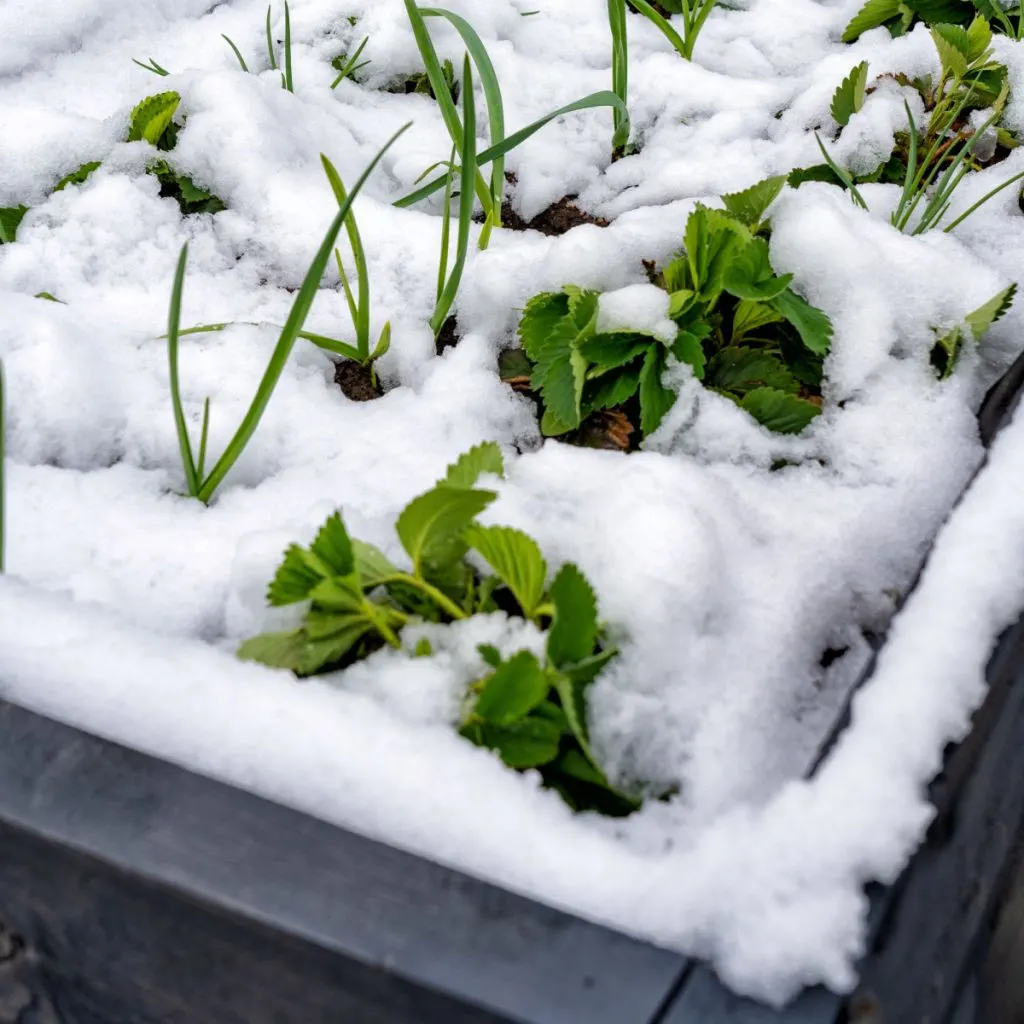
How & Why To Protect Raised Garden Beds Through Winter
Bare soil faces several threats during the winter. Wind and rain are powerful forces that easily move and wash away the rich top layer of soil. This top layer contains most of the nutrients and organic matter your plants need to grow strong and healthy. When that layer erodes, what remains is weaker, more compact, and less fertile.
Nutrient loss is also a major issue. Heavy winter rains and melting snow can leach valuable nutrients deep into the ground where plant roots can no longer reach. Nitrogen is especially vulnerable to being washed away. By the time spring arrives, much of the nutrition your plants need could be gone.
Another problem gardeners face when soil is left uncovered is weed growth. It may not seem like winter is a time when weeds take over, but this is exactly when many of them gain an advantage. Bare soil acts like an open invitation for weed seeds floating in the wind to land, settle, and make a home.
Those seeds might wait until spring to germinate, but once they do, they will already be exactly where they want to be – on bare, unprotected soil with no competing plants or mulch to slow them down. Some cool-season weeds, like chickweed can even begin growing in late fall or early winter, forming mats that take over beds before spring. This means more weeding, more time – and more frustration later.
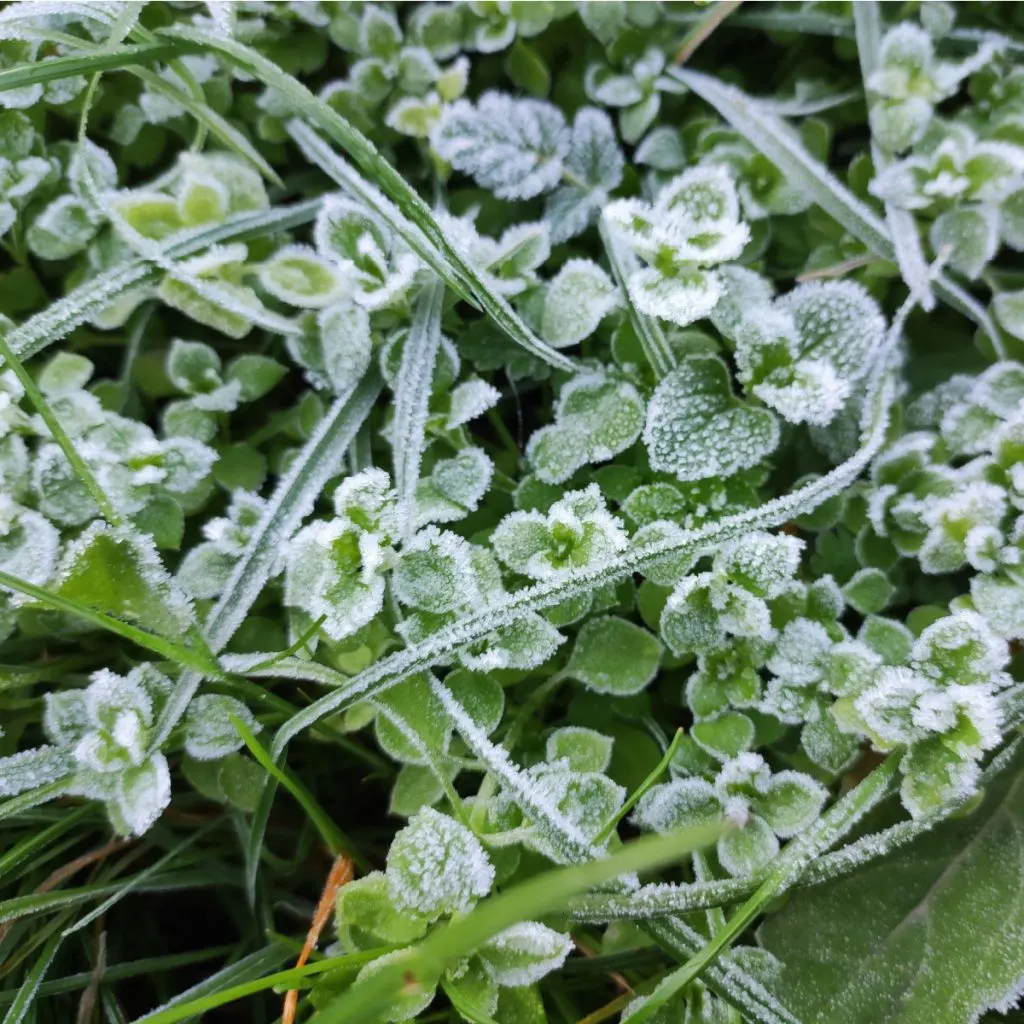
Protecting Raised Garden Beds Through Winter Doesn’t Have To Be Costly Or Time Consuming
The good news is that protecting raised beds doesn’t require expensive supplies or complicated steps. In fact, with just a little effort in late fall, you can shield your soil from erosion, preserve precious nutrients, and stop weeds before they start. With that in mind – here is a look at three easy ways to protect – and in some cases – even recharge your raised bed soil over the winter!
1. Protect Raised Garden Beds With Leaves & Grass Clippings
One of the most natural and inexpensive ways to protect raised beds is by using materials many gardeners already have on hand – shredded leaves, grass clippings, and whole leaves.
This method not only protects the soil from harsh weather but also adds nutrients back into the soil as the materials slowly decompose. To begin, start by spreading a thick layer of shredded leaves or dried grass clippings directly over the surface of the soil in your raised beds.
Shredded leaves are ideal because they break down faster than whole leaves. They also allow water and air to filter through more easily. If you have a lawn mower with a bag attachment, you can easily shred leaves by mowing over them. Grass clippings can also be used, but make sure they are free of herbicides.
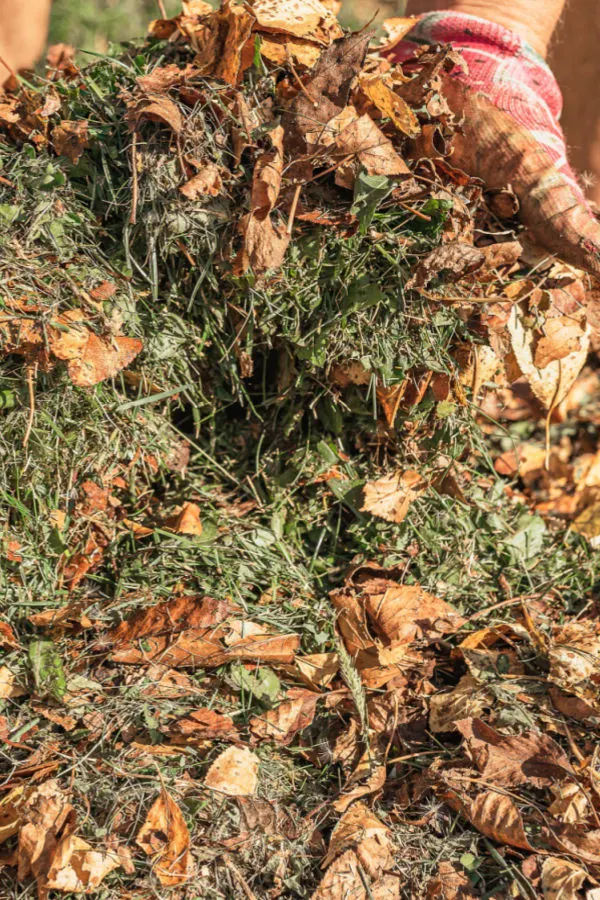
The shredded layer serves an important purpose. As the shredded leaves or clippings decompose, they release valuable organic matter and nutrients back into the soil. But – it’s important to add whole leaves on top!
Cover With Whole Leaves
Once the shredded leaves or grass clippings are in place, cover them with a layer of whole leaves. This top layer acts like a protective blanket. Whole leaves create a barrier that stops wind from blowing the shredded material away and prevents heavy rain or snow from directly hitting the soil.
They hold moisture in the layers below, which helps maintain a healthy environment for soil life. Whole leaves also help keep the soil temperature more stable, preventing deep freezing and thawing cycles that can damage soil structure and plant roots.
The key is to not pack the leaves down too tightly. Allow some airflow so moisture doesn’t become trapped and cause mold or fungus. If you’re worried about leaves blowing away, you can lightly wet them or weigh them down with a few branches or garden stakes.
By spring, much of the shredded layer will have broken down into rich organic matter, while the whole leaves can be raked aside, added to compost, or turned into the soil.

2. Planting A Cover Crop
Another excellent way to protect raised beds is by planting a quick-germinating cover crop. Cover crops are plants grown not for harvesting, but to improve soil health and protect it from damage. Two of the best crops for late fall planting are cereal rye and oats. They germinate quickly, even in cooler soil, and create a protective living blanket over the soil surface. Affiliate Link: Thunder Acres Non GMO, Certified Organic, Oat Seed
Cereal rye is one of the most popular cover crops for winter. It can germinate in soil temperatures as low as 34 degrees and continues to grow slowly even after frost. Once established, its roots grow deep into the soil, holding it firmly in place and preventing erosion.
This deep root system also helps break up compacted soil, making it easier to plant vegetables in the spring. Above ground, the thick mat of rye foliage helps stop weed seeds from finding open soil to settle into.
Oats are another great option. While oats are not as winter-hardy as cereal rye, they grow quickly and provide excellent early protection. In most regions, oats will die back in winter’s cold, but this is actually an advantage.
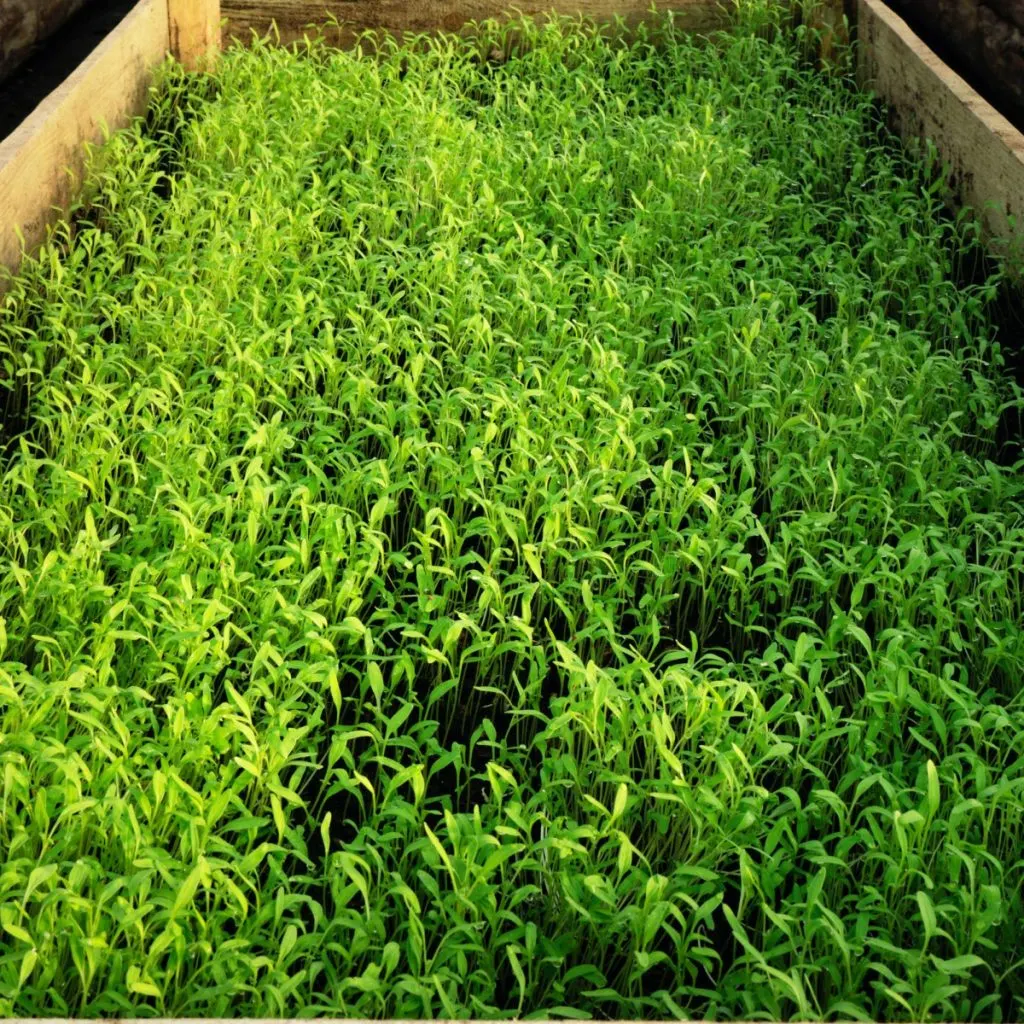
When they die, they form a natural mulch that lays on top of the soil, protecting it just like a layer of straw or leaves. The dead oat plants also break down easily in early spring, adding organic matter to the soil without needing to be tilled under. See: The Best Cover Crop For Raised Beds – Growing Oats!
Planting A Cover Crop
Planting a cover crop is simple. Remove any large plant debris from the raised bed, gently loosen the soil surface if it is compacted, and broadcast the seeds evenly across the bed.
Lightly rake the seeds into the soil or cover them with a thin layer of compost or soil. Water gently if the soil is dry. Within a week or two, you should see sprouts forming a green layer across the bed.
In spring, you can cut down the cereal rye before it begins to flower. With oats, you’ll usually find the plants already dead and laying flat on the soil. Simply leave the residue in place or mix it into the soil when preparing to plant. Either way, your soil will be healthier, softer, and more nutrient-rich.
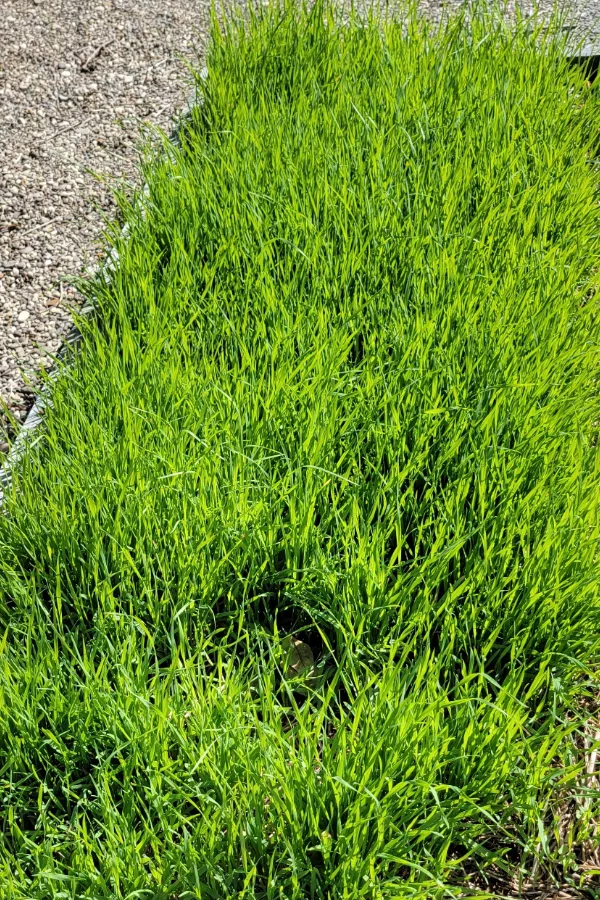
3. Covering Beds With Compost & Dark Plastic
A third method to protect raised beds during winter is by applying a layer of compost and then covering the beds with dark plastic. This method not only guards against erosion and nutrient loss, but it also helps warm the soil earlier in spring, allowing gardeners to plant sooner than normal.
Start by adding a layer of finished compost to the surface of your raised beds. Usually two to three inches is enough. This compost acts like a slow-release fertilizer. Over the winter months, nutrients from the compost will gradually work their way down into the soil. The compost also improves soil structure, making it lighter, more crumbly, and better at holding moisture.
After applying compost, cover the bed with a sheet of dark plastic. Black plastic is best because it absorbs heat from the sun and helps retain it in the soil below.
The dark plastic has several important benefits. First, it protects the compost and soil from washing away by rain or snow melt. Second, it creates a barrier that blocks weed seeds from accessing soil, light, and moisture, stopping them from germinating.
Third, the plastic traps warmth from the sun and helps prevent deep soil freezing. By early spring, the soil under the plastic is often workable much sooner than uncovered beds. When spring arrives and temperatures begin to rise, you can remove the plastic and find soft, nutrient-rich soil ready for planting!
Here is to taking time to protect your raised garden beds this winter with ease!
This Is My Garden
Follow Our Facebook Page For Great Gardening Tips And Advice! This Is My Garden Facebook Page
This Is My Garden is a garden website created by gardeners, for gardeners. Jim and Mary Competti have been writing gardening, DIY and recipe articles and books and speaking for over 15 years from their 46 acre Ohio farm. They publish three articles every week, 52 weeks a year. Sign up today to follow via email, or follow along!
